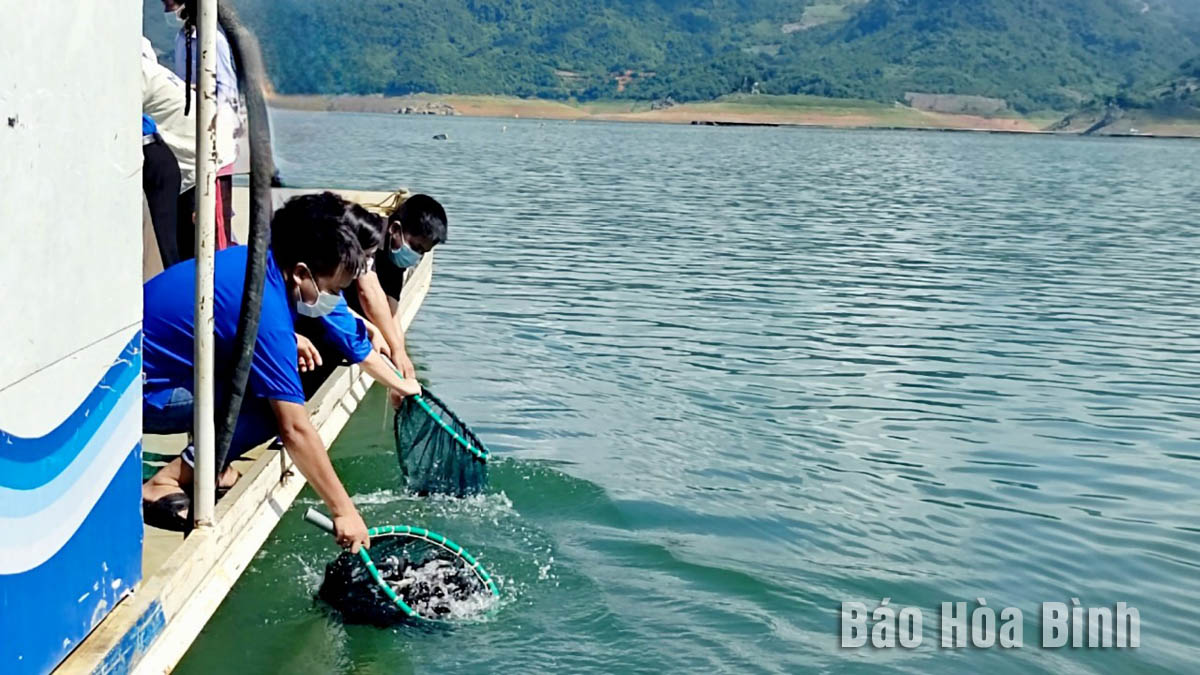



Annually, the local fisheries department collaborates with various units and organisations to release fish fry for the purpose of regenerating the aquatic resources in Hoa Binh Lake.
In recent years, the provincial Party Committee and People's Committee have paid significant attention to the development of aquaculture in the lake area, primarily through the issuance of policies to promote cage fish farming. Currently, the water surface area dedicated to aquaculture in the province covers 2,700ha with over 4,900 fish cages in Hoa Binh Lake, yielding an average annual output of over 9,500 tonnes.
According to the head of the department, Hoang Van Son, at the beginning of a year or on the traditional Vietnamese Fishermen's Day (April 1), the Hoa Binh Department of Agriculture and Rural Development organises an action month for the aquatic resources protection and restoration in Hoa Binh Lake.
Since 2020, the provincial fisheries sector has implemented a pilot project for the protection, restoration, and development of aquatic resources in the Da River basin, specifically in the Hoa Binh Lake area. Between 2020 and 2022, it conducted three training sessions on fisheries laws and related documents, printed and disseminated over 8,000 communications flyers, released 115,000 fish fry in the lake and other natural water bodies, and established 10 fish-spawning grounds where fishing is temporarily restricted. Banners were also set up to promote the prohibition of using explosives, electric shock, and prohibited substances for fishing.
For the 2023-2025 period, the fisheries sector will continue to collaborate with various departments and organisations to conduct ten more training courses, and print 50,000 communications flyers, banners, and posters. They also plan to carry out surveys and assessments of aquatic resources, focusing on indigenous, rare, valuable, and economically significant fish species. The goal is to identify and map out areas of concentrated spawning and young aquatic life, hence the establishment of protected zones. Notably, 300,000 fish fry will be released into the lake to bolster the declining aquatic resources and promote ecological diversity.